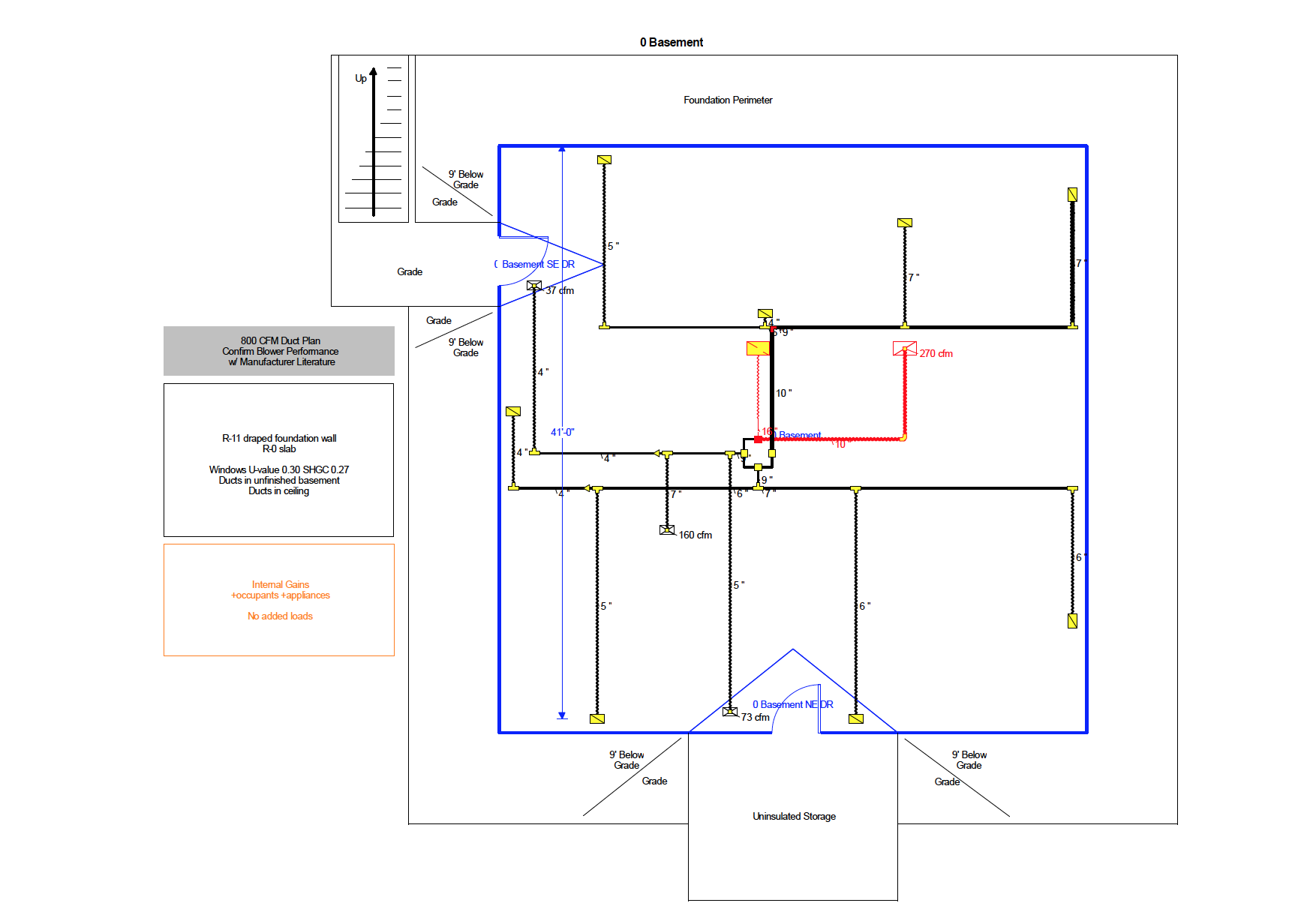Friction Rate Is the Wrong Name

Last year I wrote some articles on duct design and one of the topics I covered was this thing called friction rate. At the end of that article, I discussed “How to think about friction rate.” It confuses a lot of people because it’s the wrong name. First I’ll tell you why and then I’ll tell you what I think we should be calling it.
At the beginning of my duct design series, I hit the three big quantities that go into determining the sizing of ducts:
- Available static pressure (ASP)
- Total effective length (TEL)
- Friction rate (FR)
The available static pressure is how much push is left to move the air through the ducts after subtracting off the pressure drops for all the non-duct components in the system (i.e., filter, registers, grilles…).
The total effective length is a way of characterizing how much pressure drop you’re going to have in the duct system. And the word “total” there means the total effective length of the longest duct run. In the duct plan shown at the top of this article, the longest run is shown in bold.
The friction rate is calculated from the previous two quantities:

The factor of 100 included in the equation is there to reduce the number of zeroes in the result. And that’s why we talk about the amount of pressure drop per 100 feet instead of per foot.
Now, friction rate is based on available static pressure. It’s a number that tells you how much pressure drop you’re allowed to use per 100 feet of effective length in the duct system.
It’s a number that you want to be higher, not lower. And that’s why friction rate is the wrong name. Friction is generally something you want to minimize.
If I see a friction rate of 0.11 inches of water column (i.w.c) of pressure drop per 100 feet when I’m designing a duct system, I know the installers have some wiggle room. If they add a fitting or use a bad fitting or don’t pull the flex duct tight, the duct system will almost certainly still move enough air.
But If I see that the ducts are at 0.06 i.w.c. per 100′, there’s no wiggle room. One bad fitting could result in comfort problems.
Higher is better when it comes to friction rate. And that leads to cognitive dissonance because we don’t want a lot of friction in our ducts.
If we called it “Available Static Pressure Rate,” it would be clear that higher numbers are better. So that’s my proposal. Let’s use that term instead of “friction rate.” (I’d actually prefer the term “Available Pressure Drop Rate,” but since we’re already using “Available Static Pressure,” it’s probably best to stick with that to make the connection clear.)
Related Articles
The Basic Principles of Duct Design, Part 1
Duct Design 2 — Available Static Pressure
Duct Design 3 — Total Effective Length
Duct Design 4 — Calculating Friction Rate
NOTE: Comments are moderated. Your comment will not appear below until approved.
This Post Has 8 Comments
Comments are closed.

How do you clean flex duct?
How do you clean flex duct?
Replace with clean rigid duct
Replace with clean rigid duct.
I want to thank you for this
I want to thank you for this series and especially another way to think about “friction rate”. Seeing it described in terms of available static pressure is far more intuitive.
Think I will go back and print out your series on paper for more permanent reference. Met an 18 year old kid who intends to go to HVAC college, he could use this.
You’re welcome, Mark. Tell
You’re welcome, Mark. Tell the 18 year old going to HVAC school that if he learns as much as he can about proper air flow in ducts, he’ll know more than the vast majority of his colleagues in the industry.
Where 424 come from ?its the
Where 424 come from ?its the length of duct?
Edgar, the 424′ is an example
Edgar, the 424′ is an example of the total effective length from a design job we did in the past. If you read the article on total effective length, you’ll see that it’s not a special number. It’s different for every design and is calculated based on the layout of the duct system and the fittings used.
Dr Bailes,
Dr Bailes,
I wanted to let you know , I heard you on a podcast with Bryan Orr of hvacschool, which led me to your website. You shared a lot of good information which is much appreciated.
Thank you for your articles.
Thank you for your articles. They have been an incredible resource. One thing I can’t wrap my head around is why we need/want a minimum friction rate of 0.06iwc and a maximum of 0.18iwc – the ACCA wedge, so to speak. I don’t understand what happens below 0.06 that causes a problem… Supposedly air stops flowing? Where did this range come from?